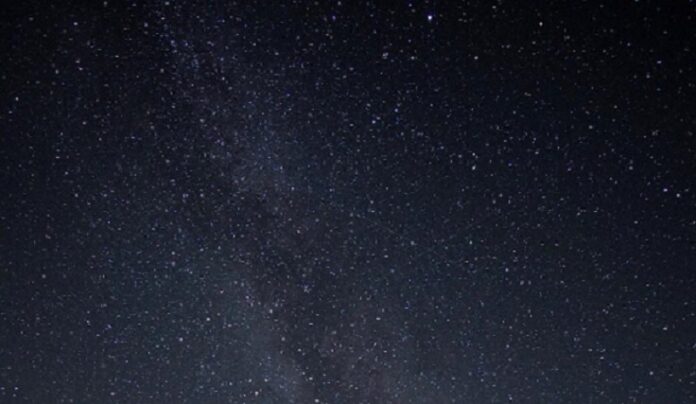Observation of 26 cm radio signals, formed due to hyperfine transition of cosmic hydrogen offer an alternative tool to the study of early Vesolje. As for neutral epoch of the infant Vesolje when no light was emitted, 26 cm lines are perhaps only window. However, these redshifted radio signals emitted by cosmic hydrogen in the early Vesolje are extremely feeble and have been elusive so far. In 2018, EDGE experiment reported detection of 26 cm signals but the findings could not be independently confirmed. The main issue was instrument systematic and contamination with the other signals from the sky. The REACH Experiment is to employ unique methodology to overcome the bottleneck. It is hoped that this research group will reliably be able to detect these elusive signals in near future. If successful, REACH Experiment may bring ‘26 cm radio astronomy’ to the forefront in the study of early Vesolje and help us much in unravelling the mysteries of early Vesolje.
When it comes to the study of zgodnje vesolje, name of recently launched vesoljski teleskop James Webb (JWST) pops up in our mind. JWST, a successor of hugely successful Hubble telescope, is a prostor-based, infrared observatory equipped to capture optical/infrared signals from the early stars and galaxies formed in the Vesolje soon after the Big Bang1. Vendar pa JWST has some limitation so far as picking up signals from the neutral epoch of zgodnje vesolje je zaskrbljen.
Table: Epochs in the history of Vesolje since the Big Bang

(Vir: Filozofija kozmologije – ozadje 21 cm. Dostopno na http://philosophy-of-cosmology.ox.ac.uk/images/21-cm-background.jpg)
Up to 380 k years after the big bang, the Vesolje was filled with ionised gas and was fully opaque. Between 380k – 400 million years, the Vesolje had become neutral and transparent. The epoch of reionisation started after this phase starting 400 million after the big bang.
During the neutral epoch of early Vesolje, ko Vesolje was filled with neutral gases and was transparent, no optical signal was emitted (hence called dark age). Unionized material does not emit light. This poses a challenge in study of early Vesolje of neutral epoch. However, microwave radiation of 21 cm wavelength (corresponding to 1420 MHz) emitted by the cold, neutral cosmic hydrogen during this epoch as a result of hyperfine transition (from parallel spin to more stable anti-parallel spin) offers opportunities to researchers. This 21 cm microwave radiation would be redshifted upon reaching Earth and will be observed at 200MHz to 10 MHz frequencies as radio waves2,3.
21 cm radijska astronomija: Observation of 21-centimeter cosmic hydrogen signals offers an alternative approach to the study of early Vesolje especially of neutral epoch phase that was devoid of any light emission. This can also inform us about new physics such as distribution of matter over time, dark energy, dark matter, neutrino masses, and inflation2.
However, the 21-cm signals emitted by the cosmic hydrogen during early Vesolje phase is elusive. It is expected to be extremely weak (about one hundred thousand times weaker than other radio signals also emanating from the sky). As a result, this approach is still in infancy.
Leta 2018 so raziskovalci poročali o zaznavi takšnega radijskega signala na frekvenci 78 MHz, katerega profil je bil v veliki meri skladen s pričakovanji za 21-centimetrski signal, ki ga oddaja prvobitni kozmični vodik.4. Toda tega odkrivanja prvotnega 21-cm radijskega signala ni bilo mogoče neodvisno potrditi, zato zanesljivosti poskusa doslej ni bilo mogoče ugotoviti. Zdi se, da je glavna težava kontaminacija z radijskimi signali v ospredju.
Najnovejši mejnik je poročilo o radijskem eksperimentu za analizo kozmičnega vodika (REACH) 21. julija 2022. REACH bo uporabil nov eksperimentalni pristop za zaznavanje teh šibkih izmuzljivih kozmičnih radijskih signalov in tako ponuja novo upanje za potrditev 21-centimetrskih kozmičnih signalov.
Radijski eksperiment za analizo kozmičnega vodika (REACH) je 21-cm eksperiment v nebu. Namen tega je izboljšati opazovanja z obvladovanjem težav, s katerimi se srečujejo instrumenti, povezani s preostalimi sistematičnimi signali v podatkih. Osredotoča se na odkrivanje in skupno razlago sistematike skupaj z ospredjem in kozmološkim signalom z uporabo Bayesove statistike. Eksperiment vključuje hkratna opazovanja z dvema različnima antenama, ultraširokopasovnim sistemom (razpon rdečega premika od približno 7.5 do 28) in kalibratorjem sprejemnika na podlagi meritev na terenu.
This development is significant given its potential to be one of the best tools (and cost effective too vis-a-vis prostor-based observatories like james webb) for study of early Vesolje as well as possibility of ushering in of new fundamental physics.
***
Reference:
- Prasad U., 2021. Vesoljski teleskop Jamesa Webba (JWST): Prvi vesoljski observatorij, posvečen preučevanju zgodnjega vesolja. Znanstveni evropski. Objavljeno 6. novembra 2021. Na voljo na http://scientificeuropean.co.uk/sciences/space/james-webb-space-telescope-jwst-the-first-space-observatory-dedicated-to-the-study-of-early-universe/
- Pritchard JA in Loeb A., 2012. 21 cm kozmologija v 21. stoletju. Poročila o napredku fizike 75 086901. Dostopno na https://iopscience.iop.org/article/10.1088/0034-4885/75/8/086901. Prednatis na arXiv na voljo na https://arxiv.org/abs/1109.6012 pdf različica https://arxiv.org/pdf/1109.6012.pdf
- Oxfordska univerza. Filozofija kozmologije – ozadje 21 cm. Na voljo na http://philosophy-of-cosmology.ox.ac.uk/21cm-background.html
- Bowman, J., Rogers, A., Monsalve, R. et al. Absorpcijski profil s središčem pri 78 megahercih v nebu povprečnem spektru. Narava 555, 67–70 (2018). https://doi.org/10.1038/nature25792
- de Lera Acedo, E., de Villiers, DIL, Razavi-Ghods, N. et al. Radiometer REACH za zaznavanje 21-cm vodikovega signala iz rdečega premika z ≈ 7.5–28. Nat Astron (2022). https://doi.org/10.1038/s41550-022-01709-9
- Eloy de Lera Acedo 2022. Razkrivanje skrivnosti mladega vesolja z radiometrom REACH. Na voljo na spletnem naslovu https://astronomycommunity.nature.com/posts/u
***






































